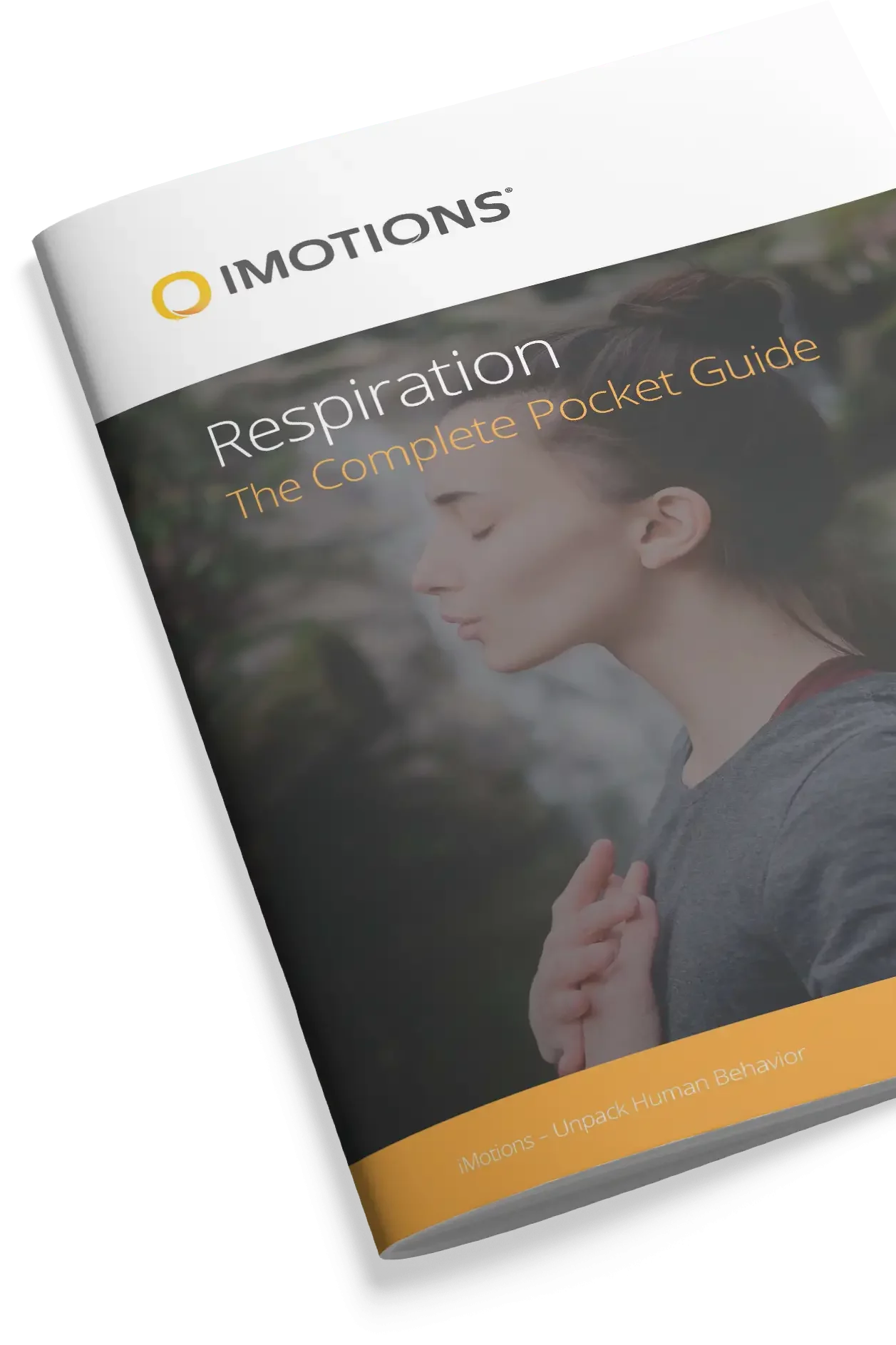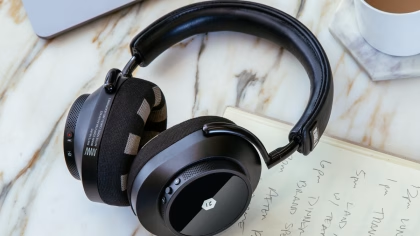Webcam respiration enhances remote research by detecting respiration rate and cycle duration through video analysis. Researchers gain emotional insights using only a webcam, combining webcam-based respiration with eye tracking and facial expression analysis for a more nuanced understanding of respondents’ implicit emotional responses, even remotely.
Table of Contents
- What is Webcam Respiration?
- How Well Does Webcam Respiration Work?
- How can I combine Webcam respiration with other Remote Data Collection tools?
- Adding Respiration to Eye Tracking
- Adding Respiration to Facial Expression Analysis
- Combining Facial Expression Analysis, Eye Tracking and Respiration
- Interested in learning more?
- Free 29-page respiration Guide
Remote research is becoming increasingly popular as it gives respondents more convenience because it does not require that they travel to a physical lab. Researchers can more easily collect data from sample populations spread across time zones without expensive hardware or accommodate carefully selected respondents with unusual working hours or who are notoriously difficult to reach. webcam-based respiration is now available to add to remote data collection research.
What is Webcam Respiration?
Put simply, webcam respiration (WebResp) allows researchers to detect respiration rate (cycle of inhaling and exhaling) and cycle duration from video. It uses algorithms to analyze the frames captured by a web camera. Feature detection algorithms for WebResp use landmarks such as the head, shoulders, and arms to select the chest area from video frames. (For those familiar with our webcam-based eye tracking technology, this is similar to how WebET uses facial landmarks to find pupils for eye tracking.)
Then, the WebResp algorithm compares sequential frames to track subtle changes in the chest area, filtering out chest movements that are not likely to be related to breathing. The filters are set to cover a range of breathing rates that extend below and above resting breathing rates so that you can detect changes in breathing that are outside of normal patterns and accommodate younger participants.
Webcam respiration is not based on remote photoplethysmography (rPPG, also known as camera-based photoplethysmography ) which uses videos of faces and detection of changes in skin color and luminance (reflected by changes in RGB values), to infer changes in blood volume. From these changes, algorithms can be used to estimate heart and respiration rate. One major difference is that rPPG relies on changes in skin color and quality of data can vary with skin color. WebResp relies on chest movements, not changes in skin.

How Well Does Webcam Respiration Work?
We released a white paper evaluating webcam respiration.
In the first study, we compared WebResp to a respiration belt, the gold standard for measuring respiration. We found that the two methods were comparable for determining cycle count and respiration rate in a controlled lab setting with respondents sitting still in front of a screen watching neutral and emotional videos.
In the second study, we evaluated whether WebResp would be useful for consumer neuroscience studies. Specifically, could quality data be collected remotely and was this data sufficient to detect changes in respiration one might expect when in a consumer neuroscience studies? To emulate consumer neuroscience stimuli, respondents were given videos and images that were intended to be funny, disgusting, positive or neutral.
The first analysis showed that quality data could be collected remotely. The mean and median quality of the data was higher than the chosen quality cutoff for useful data, indicating that more than half of the data collected could be analyzed further. Note, this does not mean that a large number of the participants were excluded. For 195 participants, over 3 million datapoints were analyzed for quality.
The quality data was then used to see if we could detect changes in respiration rate when subjects were looking at various stimuli (funny videos, disgusting images, positive images and a baseline video). WebResp could be used to detect changes in respiration rate when comparing a funny video to the baseline, disgusting or positive video. The average cycle duration varied significantly between the disgusting and humorous videos as well as the funny videos and positive images.

How can I combine Webcam respiration with other Remote Data Collection tools?
Using webcams alone, eye tracking and facial expression analysis combined with traditional metrics such as surveys have been the main tools in remote biosensor research. Now, iMotions offers webcam respiration detection allowing additional insights from the same webcam data, through the Remote Data Collection Module.
Adding Respiration to Eye Tracking
If you are already using webcam-based eye tracking to learn about how your respondents are allocating attention, webcam respiration can give additional insights into respondents’ implicit emotional response using the same web camera data.
When using video advertisements or movie trailers in a remote study, these dynamic stimuli have often been carefully curated to draw attention to certain parts of the video at particular times. Webcam-based eye tracking with remote data collection can evaluate whether respondents are noticing what the curators expect respondents to notice and understand how they are allocating their attention during viewing.
Complementing eye tracking with respiration adds information about respondents’ implicit emotional responses through changes in respondents’ respiration rates. Respiration allows A/B testing with eye tracking to go beyond attention and give more nuanced indications. For example, changes in eye tracking metrics (such as dwell time or revisits) demonstrate visual attention. Supplementing these data with information about breathing patterns can indicate interest in a likable actor, confusion regarding the purpose of a product, or anticipation during a tense scene in a horror trailer.
Additionally, implicit emotional responses are not limited to reactions to the visual information from the video stimulus. With eye tracking alone, it is difficult to understand implicit emotional responses and how the sounds in the tested videos affect your study participants. Changes in background music or the voices of narrators and actors can affect implicit emotional responses. Sound effects can enhance how immersive the experience is for the audience. Respiration metrics allow these additional insights to be combined with attention metrics from webcam-based eye tracking.
Adding Respiration to Facial Expression Analysis
Facial Expression Analysis is an excellent tool for detecting expressed emotions, even if they are expressed for only a fraction of a second. Letting us see when respondents express joy, anger, surprise, fear, contempt, sadness or disgust and for how long these expressions last. One limitation with studying expressed emotions is that some respondents may suppress a smile, mask confusion, or exaggerate their emotions.
While biosensors cannot tell us why the respondent is motivated to control their behavior in this manner, we can compare their facial expressions with their breathing patterns to understand the complexity of their emotional response, allowing us to compare expressed emotions to implicit emotions. Respiration can capture when respondents sigh, gasp, or hold their breath as well as changes to their respiration rate. Webcam respiration is also useful for gaining insights into emotions of respondents that are not particularly expressive in terms of facial movements.
Combining Facial Expression Analysis, Eye Tracking and Respiration
A popular lab set-up for neuromarketing labs is galvanic skin response (GSR), eye tracking (ET), and facial expression analysis (FEA). GSR has become a powerful tool for testing video advertisements, movie trailers and other video stimuli to understand the intensity of emotional responses while viewing. This allows researchers to detect small changes in skin conductance during emotionally charged scenes.
One obvious obstacle for those conducting remote research is that researchers are unable to place electrodes on their participants. With webcam respiration, market researchers can get similar insights as typical neuromarketing labs using data from only webcams. In some cases, respiration can be more useful than GSR.
GSR is great for measuring increased sympathetic activity and is often used to explore topics such as general arousal which provides insights into things like cognitive workload and alertness. However, GSR cannot tell us about parasympathetic activity. Respiration is affected by both the sympathetic and parasympathetic nervous systems which means it can also be used to study relaxation. Respiration can also be used to detect holding your breath when afraid or disgusted or measure shorter breath cycles when excited.
For more information about the Webcam Respiration Module, please visit the dedicated module page:
Webcam Respiration
Measure breaths to understand physiological and emotional arousal.
See Features NowInterested in learning more?
- Our NeuroPsychoEconomics Conference Poster
- Review for Respiration and Emotion Research
- Updated Respiration Pocket Guide ↓
Free 29-page respiration Guide
For Beginners and Intermediates
- Learn about its anatomy and mechanisms
- Read about application in various research fields
- Overview of the different ways of collecting and processing respiration data













